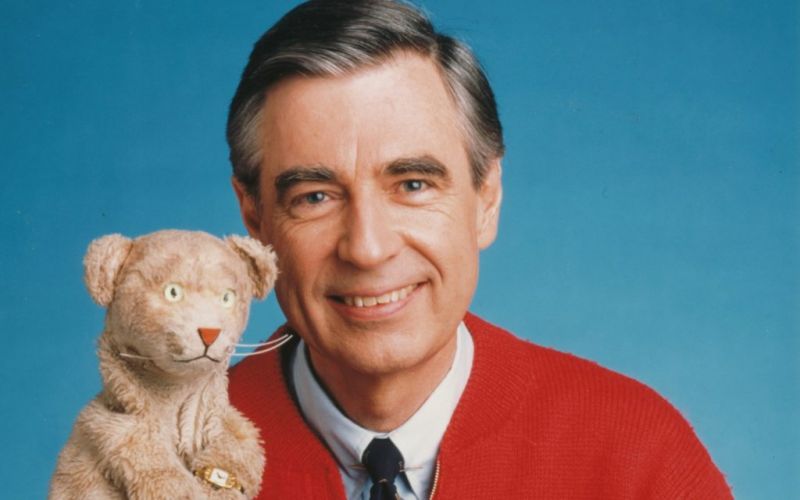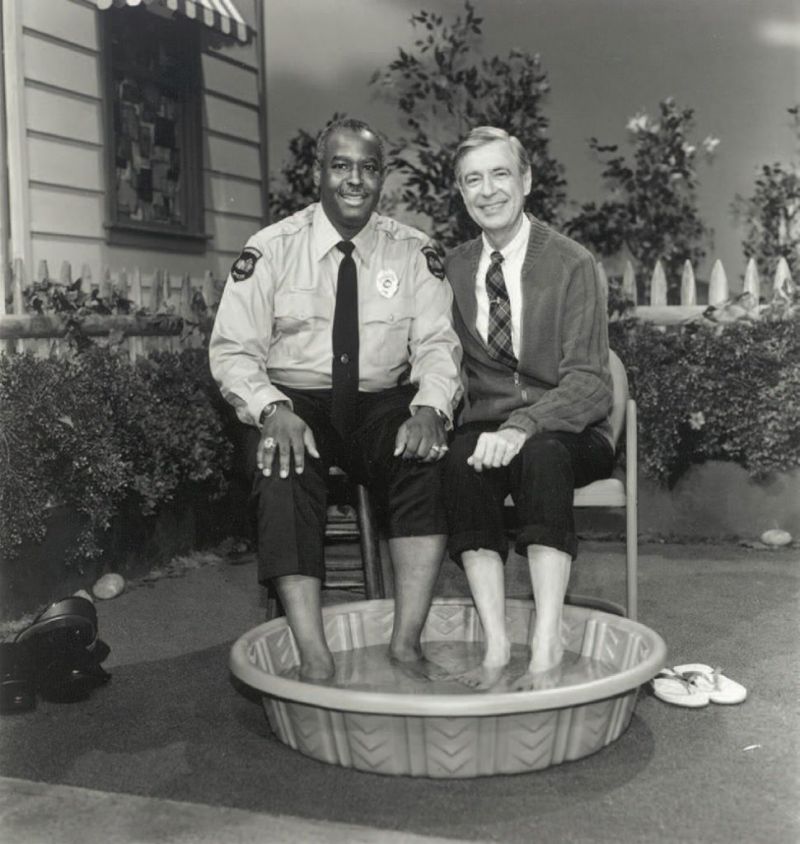A Moment with Mr. Rogers
 I interviewed Fred Rogers, creator and host of television’s Mister Rogers’ Neighborhood, by telephone a few years before he died. The occasion was the publication of his new book. Mister Rogers arrived on television after I grew up but I’d watched his show with our young daughter. She and I both preferred the often frantic Sesame Street, finding the Neighborhood a bit slow, sometimes a bit boring. Yet we kept watching it because we sensed something real and true behind the words and deeds of Fred Rogers and his friends and puppets on the show.
I interviewed Fred Rogers, creator and host of television’s Mister Rogers’ Neighborhood, by telephone a few years before he died. The occasion was the publication of his new book. Mister Rogers arrived on television after I grew up but I’d watched his show with our young daughter. She and I both preferred the often frantic Sesame Street, finding the Neighborhood a bit slow, sometimes a bit boring. Yet we kept watching it because we sensed something real and true behind the words and deeds of Fred Rogers and his friends and puppets on the show.
Still, when I picked up the handset to call the man, I didn’t know what to expect. What would he be like away from the camera? I didn’t even know how to address him.
“I don’t know whether to call you Fred or Mister Rogers,” I said.
“Oh, that’s up to you!” drawled the warm, familiar voice from an office in Pittsburgh.
“How do most adults approach you?”
“Well, many of them have grown up with the Neighborhood and they invariably call me ‘Mister Rogers.’” He paused, then continued with a dash of excitement. “But you know something I’ve discovered? Friends of ours went to Sweden and they brought back—in fact I’ll reach and hold it while I’m telling you—they brought back this thing made out of soldered nails. And it says, ‘F-R-E-D.’ I asked, ‘Where did you find my name?’ They said, ‘It was with all of these words up on a wall. Fred is the word for peace in Sweden.’ Now I have a whole new appreciation for that four-letter word!”
Directing his attention to his book, I asked about publicity plans. To my surprise he responded that he was “a fairly private person,” one not “keen on being on display.”
I pointed out the irony of the very public career he had chosen and he agreed but added, “I love to have the give and take. I feel as if I grow in relationship with others.”
After I asked a couple of questions about the ideas in the book, he said, “You’ve read this book closely. That’s such a gift to somebody like me. In fact I’m touched that you would have cared enough to have read it so closely.
“Will you show it to your wife?” he asked.
I said yes and he confessed, “You work hard on something like this. This book was not just a year in the making, this book was fifty years in the making. I’m just so delighted that it means something to you.”
 Fred Rogers (r.); Dr. François S. Clemmons (l.) on the set of
Fred Rogers (r.); Dr. François S. Clemmons (l.) on the set of
Mister Rogers’ Neighborhood, 1986
I knew Mister Rogers spoke often about peace so I asked what we could do to bring peace to the world.
He thought a bit, then said, “It can come only through long and concentrated measures of justice.
“You probably have read To Kill a Mockingbird. When I think of Atticus Finch, who lost all his friends by taking on that case of the wrongly convicted black man, and when I see him being defeated in that courtroom, and walking out, and then his children, with all of the black community, get to their feet to honor him, I feel that that is truly living a life of peace. It certainly speaks to justice in my estimation.”
Before we said our goodbyes, I asked Mister Rogers if he would leave a message for our daughter, which he happily did. He then offered to write her a letter. A week later, two envelopes arrived, one for her, one for me. Inside each was an 8×10 photo of Mister Rogers with a gracious, surprisingly long missive handwritten in pen on the back.
What does this have to do with this issue’s theme of “Change and the Changeless”? Just this: Most of us react in myriad, often uncontrollable ways to people and events: with anger, love, fear, boredom, hate, indifference, arrogance. We change moment to moment. Yet by all accounts, and there are hundreds of them, and by my own observation, Fred Rogers responded to nearly all in the same way: with a patient, generous loving-kindness, with a desire to connect on the deepest level.
To do this demands astonishing discipline (which Mister Rogers had in abundance; he weighed the same 143 pounds each day of the last thirty years of his life). It’s a discipline in which the changeable is anchored to, and placed in service of, something changeless. In the case of Fred Rogers, who was an ordained Presbyterian minister, that changeless something was God, and the joy of doing God’s work. As he once said in a commencement address, “When we look for what’s best in a person, we’re doing what God does all the time. So in loving and appreciating our neighbor, we’re participating in something sacred.” ♦
From ParabolaVolume 44, No. 1, “Change & the Changeless,” Spring 2019. Parabola is a not-for-profit organization. Four times a year for over thirty-five years, it has gathered the wisdom of the world's spiritual traditions to illuminate the central questions of life. Jeff Zaleski is editor and publisher of Parabola.


On Mar 18, 2019 Barbara wrote:
When I was a teacher of third graders, I always started the year by saying, "Let's always look for the best in each person." It was a way to focus on the positive and work at peaceful coexistence.
Even now, I still live that in my interactions with others.
Post Your Reply